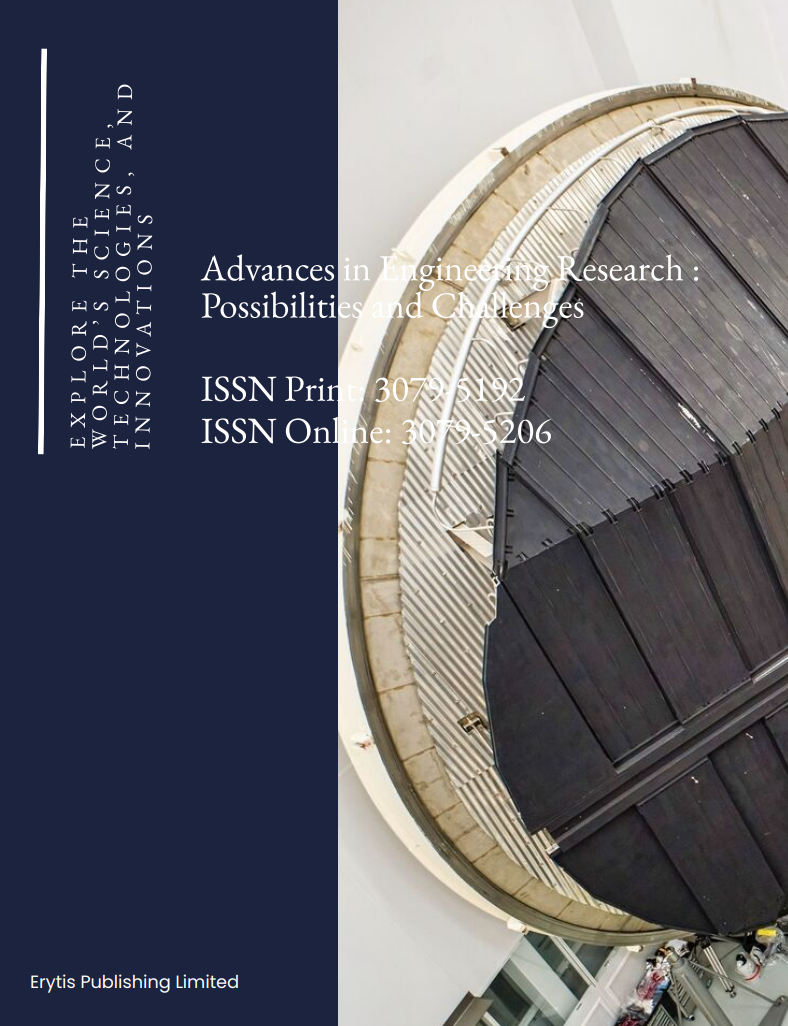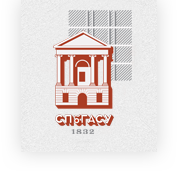Effect of Fiber Orientation on Grinding Characteristics and Removal Mechanisms of Cf/SiC
DOI:
https://doi.org/10.63313/AERpc.9019Keywords:
Cf/SiC composites, Single-grit scratching experiment, Finite element analysisAbstract
Carbon fiber-reinforced silicon carbide ceramic matrix composites (Cf/SiC) ex-hibit advantages such as high-temperature resistance, low density, and high spe-cific strength, making them widely applicable in aerospace, new energy vehicles, and other fields. However, their heterogeneous nature and hard-brittle fracture mechanisms lead to poor machined surface quality. To clarify the influence of fiber orientation on grinding characteristics and material removal mechanisms, single-grit scratching experiments were conducted, and a finite element model (FEM) of Cf/SiC composites was established. Two machining directions, MA (transverse direction) and MB (longitudinal direction), were defined based on fiber orientation, and the effects on normal force (Fn) and surface morphology were investigated. A finite element numerical model of Cf/SiC composites was developed, incorporating the mechanical properties of fibers, matrix, and inter-faces. Simulation results revealed that Fn increases with cutting depth, and the average Fn magnitude followed the order MB > MA. Cracks propagated along the fiber axis: transverse fibers were removed via wear, fracture, and peeling, with some fibers exposed due to brittle matrix fracture; longitudinal fibers were re-moved via wear and debonding, primarily influenced by the contact area be-tween fibers and abrasive grits.
References
[1] Dai C, Yin Z, Wang P, et al (2021) Analysis on ground surface in ultrasonic face grinding of silicon carbide (SiC) ceramic with minor vibration amplitude. Ceram Int 47:21959–21968.
[2] Li F, Xiao P, Li Z, et al (2021) Microstructures and properties of C/C-SiC composites de-rived from different gaseous carbon matrix precursors. Ceram Int 47:30777–30789.
[3] Wei X, Cheng L-F, Zhang L-T, Xu Y-D (2006) Numerical simulation of iso-thermal chemical vapor infiltration process for fabrication of C/SiC composites. J Inorg Mater 21:1179–1184
[4] Yang C, Yang L, Xu P, et al (2024) Mechanical and microstructure characteri-sation of 2.5D C/C-SiC composites applied for the brake disc of high-speed train. Alex Eng J 108:445–458.
[5] Li L (2019) Damage development and lifetime prediction of fiber-reinforced ceram-ic-matrix composites subjected to cyclic loading at 1300 °C in vacuum, in-ert and oxidative atmospheres. Aerosp Sci Technol 86:613–629.
[6] Aamir M, Tolouei-Rad M, Giasin K, Nosrati A (2019) Recent advances in drilling of carbon fiber-reinforced polymers for aerospace applications: a review. Int J Adv Manuf Technol 105:2289–2308.
[7] Abidin NMZ, Sultan MTH, Hua LS, et al (2019) A brief review of computation-al analysis and experimental models of composite materials for aerospace appli-cations. J Reinf Plast Compos 38:1031–1039.
[8] Guo Y, Chen B, Fu X, et al (2024) Experimental study on grinding 2.5D C/SiC composites by electroplated grinding wheel with ordered abrasive clusters. Diam Relat Mat 142:110838.
[9] Zhang C, Chen T, Duan Z, Liu F (2024) Investigation on ultrasonic-assisted grinding of characteristics of C/SiC composites by brazed and electroplated dia-mond wheels. Int J Adv Manuf Technol 132:2171–2186.
[10] Zhang L, Ren C, Ji C, et al (2016) Effect of fiber orientations on surface grinding process of unidirectional C/SiC composites. Applied Surface Science 366:424–431.
[11] Li Y, Ge X, Wang H, et al (2019) Study of material removal mechanisms in grinding of C/SiC composites via single-abrasive scratch tests. Ceram Int 45:4729–4738.
[12] Qu S, Gong Y, Yang Y, et al (2019) Grinding characteristics and removal mechanism of 2.5D-needled Cf/SiC composites. Ceram Int 45:21608–21617.
[13] Cao X, Lin B, Zhang X (2015) Investigations on grinding process of woven ceramic matrix composite based on reinforced fiber orientations. Composites Part B: Engineering 71:184–192.
[14] Liu Q, Huang G, Cui C, et al (2019) Investigation of grinding mechanism of a 2D Cf/C-SiC composite by single-grain scratching. Ceram Int 45:13422–13430.
[15] Wang Q, Wen J, Wu C, et al (2024) Single diamond grit scratching of unidi-rectional Cf/SiC composite: Mechanical responses and fracture mechanism. Proc Inst Mech Eng Part B-J Eng Manuf 238:669–681.
[16] Lin H, Zhou M (2024) Fracture mechanism of ultrasound-assisted scratching 2D-SiCf/SiC composite fibers with different fiber orientations. J Mater Res Tech-nol-JMRT 30:9048–9060.
[17] Wu J, Song X, Gong Y, et al (2021) Analysis of the heat conduction mecha-nism for Al2O3/Silicone rubber composite material with FEM based on experi-ment observations. Compos Sci Technol 210:108809.
[18] Jia Q, Wang Y, Zhang X, et al (2022) Failure mechanism of continuous fi-ber-reinforced ti-tanium matrix composite bling under rotational loading. J Mater Res Technol-JMRT 18:788–799.
[19] Zhu H, Feng Y, Zhou Z, et al (2024) Simulation and experimental research on longitudi-nal-torsional ultrasonic vibration drilling of CFRP/Ti laminates. Proc Inst Mech Eng Part B-J Eng Manuf.
[20] Du Y, Lu M, Lin J, et al (2024) Experimental and simulation research on re-moval mecha-nism of precision machining SiCp/Al composites based on mul-ti-phase simulation model. Alex Eng J 109:482–496.
[21] Yan X, Reiner J, Bacca M, et al (2019) A study of energy dissipating mecha-nisms in or-thogonal cutting of UD-CFRP composites. Compos Struct 220:460–472.
[22] Han L, Zhang J, Liu Y, Sun T (2021) Effect of fiber orientation on depth sensing in-tra-laminar failure of unidirectional CFRP under nano-scratching. Compos Pt B-Eng 224:109211.
[23] Chen G, Xu J, Wang J, et al (2022) Numerical and experimental study on the amplitude ef-fect of ultrasonic vibration-assisted milling of 3D needle-punched Cf/SiC composite. Ce-ram Int 48:17893–17914.
[24] Gu X, Wang H, Zhao Q, et al (2018) Effect of cutting tool geometries on the ductile-brittle transition of monocrystalline sapphire. Int J Mech Sci 148:565–577.
[25] Fouquet S, Rollin M, Pailler R, Bourrat X (2008) Tribological behaviour of composites made of carbon fibres and ceramic matrix in the Si-C system. Wear 264:850–856.
[26] Paul R, Gouda K, Bhowmik S (2021) Effect of Different Constraint on Tribo-logical Behav-iour of Natural Fibre/Filler Reinforced Polymeric Composites: a Review. Silicon 13:2785–2807.
Downloads
Published
Issue
Section
License
Copyright (c) 2025 by author(s) and Erytis Publishing Limited.

This work is licensed under a Creative Commons Attribution 4.0 International License.















